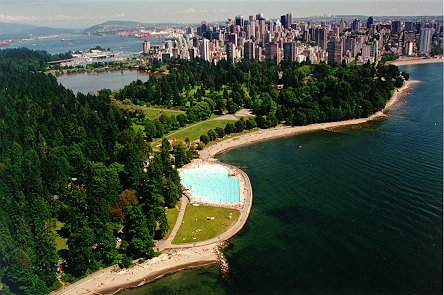
This is the final week of the Green Event blog, and I wanted to bring a few issues home. Of all the issues that have been covered, one idea encompasses all of them, and more – event certification. In the marketplace today, we have been flooded with tips (and now twits) on green practices. Still, however, we must carefully differentiate the useful and relevant advice from the mere wives’ tales.
A green standard or certification offers all of this, and takes much of the guesswork out of ‘greening’. Of course, it must be credible, useful and based on sound data, as I discussed under standards and reporting. There is a long way to go in this world, however, and below I will highlight a few resources and discus what the future may hold.
The Potential Market is Large:
All events, no matter how different, share attributes in common. They require temporary resources, involve significant numbers of attendees, and can involve lots of public communication. Thus, the market for a green label, the market I have been implicitly addressing in the past blogs, stretches well beyond an athletic event. They include:
•Junior League Sports
•College Sports Championships
•Professional Sport Championships (PGA, NFL, NHL, FIFA)
•Concerts
•Weddings
•Art Exhibits
•Cultural Events
•Symphonies/Orchestral Performances
•Celebrations (National Day, Religious Holiday, New Year)
•Fairs
•Carnivals
Advice Doesn’t Cut It:
Green advice is a dime a dozen. Sure, it may seem easy to have google do the legwork for you, but your gradma’s gardening blog might not offer the most comprehensive thinking on reducing energy for Wrigley Field. Thanks to the internet, there have been hundreds of books published that purport environmental advice. E-books and blogs have changed the landscape in past years, and with negligible or zero online publishing costs, everyone can consider themselves an “informational” source. Thus, it’s a tricky job to publish a definitive guide to “green events”. Some interesting resources that have made it through the online clutter, however, are The Lazy Environmentalist by Josh Dorfman (who includes recent topics such as a Sustainable Music Festival in New Orleans – http://bit.ly/1wIRW) and The Green Bride Guide by Kate Harrison (http://www.thegreenbrideguide.com/).
You’ll Pay For Personal Service:
A few companies have used the complicated and cluttered world of green advice to their advantage, and offer personal, best-practice guidance tailored to your event. A consulting service can be the way to go for those events who have money (very few) and a large public audience, where the event’s reputation is at stake if the attendees catch a whiff of greenwash. The rest of us, however, might not find the exorbitant costs palatable. In my work, although I can’t personally attest to the quality of their practices, I have come across two notable event consultancies.
Helios Partners is a sports marketing company that has transitioned into green event management consulting. In July, they announced a sustainable sport partnership service, including “green-in-kind” value sponsorships, carbon management, green venue development, and college and university guidance.
The Green Event Company (www.greeneventco.com) is a consultancy providing green management based in Boulder, Colorado. A unique feature is that The Green Event Co is a registered B-Corporation, itself attesting to the social practices and principles under the B-Corporation brand.
Certifications Are Coming:
The GRI, ISO and GHG-protocol are, of course, incredibly broad and don’t specifically pertain to events themselves. Hitting closer to the spot, the Eco-Logo event certification CCD-095 is the Canadian company’s vision of an international event-specific standard, updated recently in 2009. The British have decided to move in the same direction, and the 2012 Olympics will be working off of BS8901, a new system of sustainable management guidelines that is heavily supported by online training, case studies, and webinars. However trite it may seem though, it’s unlikely that other international events, or those based in the United States, will publicly acknowledge that they have adhered to a British-based standard.
One idea that might bridge the remaining gap is to take a lesson from the Wedding Planning industry, which certifies professionals themselves. A Certified Wedding Planner (designated as such by the American Association of Certified Wedding Planners – AACWP – or institution in another country) can simplify the job. Event organizers hiring a sustainable concert/athletic/festival/younameit event planner can rest assured they are conforming to accepted standards while saving on the costs associated with bringing on an entire consulting team. I believe such a certification, if not already in development, is on the near horizon – and will be an opportunity I’ll be looking at in the future. After all, the AACWP is already working on a certified green wedding planner.
That concludes the Green Event blog, though stay tuned from time to time as updates may appear on the topic. It’s been a great time working at the Vancouver 2010 Olympics, and I, for one, will be watching to see how this world-wide event will turn out in February!







